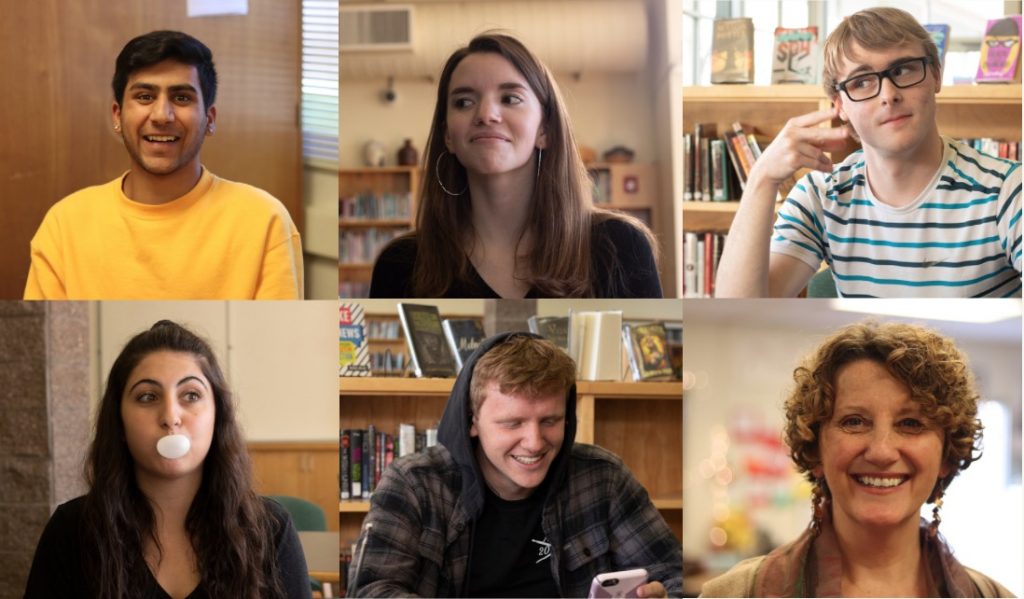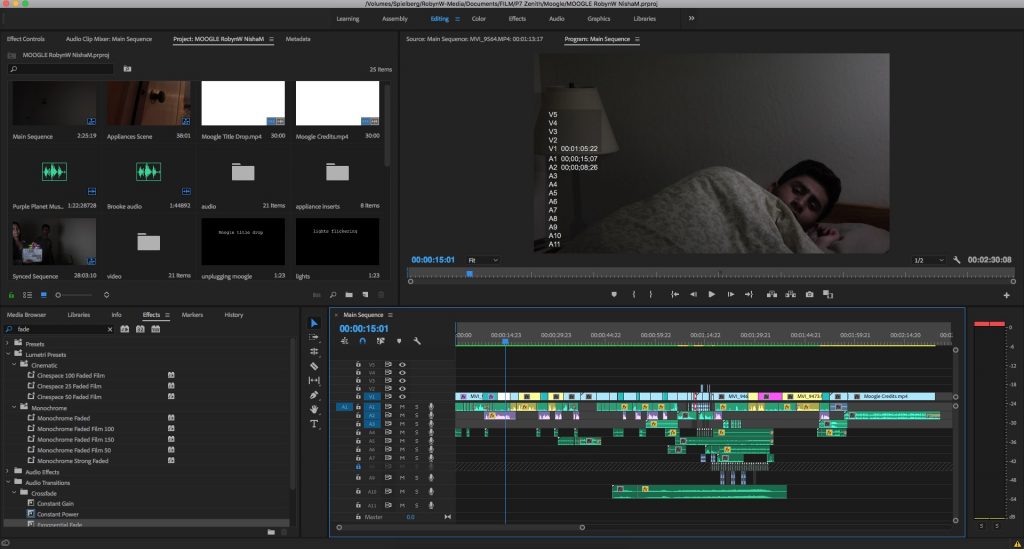Zenith
Introduction
For my Zenith Project, I partnered with fellow film student Robyn Watson to produce two narrative shorts. Immediately following senior narrative, both of us sought to do another project that focused on fictional storytelling and would allow us to explore genres outside of our comfort zone. In addition, I personally wanted to gain more experience in screenwriting, lighting, and editing for narrative film.
Over the course of roughly two months, we eventually wrote, filmed, and edited two films: “Heard”, a 5 minute short about four teenagers that came together to work on a group project, and “Moogle Home”, a 2 minute spoof on the product Google Home and one person’s frustrating (and frightening) experience with the tech.
Screenwriting
The first idea that we pitched to our media class (and intended to make into a film) was a story about a waitress who tries to get the chef and a patron at a restaurant to fall in love on a sad Valentines’ day for them both. We also brainstormed several other ideas: an advertisement about a near-blind man in a dystopian world that gets a pair of glasses; a reclusive self-published author that accidentally destroys his computer (carrying his latest work) and has a meet-cute with the computer repair technician; a stressed employee that just wants to spend time with his family on their road trip together that learns to stand up to his manipulative and workhorse boss.
We eventually wrote four total screenplays, plus revisions for each. However, for one reason or another, we weren’t happy with the final product. Either the characters were underdeveloped or the plot had problematic holes or we didn’t resonate with the story after we had written it. In addition, we realized that some of our screenplays would not fit the constraints of our project – they would talk to long to film or be too difficult to cast. What we originally set aside two weeks for ended up taking about four to five weeks. However, this was part of our need to produce a film with a script that we actually liked and would ultimately be proud of.
Pre-Production
Once we had finalized our script, we sent a pre-production package to Mr. Taylor for review. It included our casting decisions, locations, props, a shot list of everything we planned to film, and a production schedule.

Production
Given our casting and location choices, we had a lot of fun on set, and production went by smoothly. For “Heard”, we casted four Freestyle seniors that we thought would be able to play each role well as our main characters, and we filmed in the Mountain View High School library with the permission of the library staff. Similarly, for “Moogle Home”, we cast one senior and filmed in his home.
“Heard” was a slightly longer film (a six page screenplay) and took three two-hour shoots to complete. With “Moogle Home”, we filmed everything with our main actor in one two-hour shoot and filmed the rest of the inserts at our own homes whenever we had free time.
On set, Robyn did most of the camera work, while I focused on lighting and sound. We split up the directing work on both shoots.
Post-Production

We had the least amount of time for post-production. Even though it was a quick process, I enjoyed editing each scene, as being able to watch each take and stitch the film together is when the project really came to life for me. I also gained greater exposure to After Effects; I used it for the explosion scene in “Moogle Home” and for the credits.
The Product
Watch our finished films here!